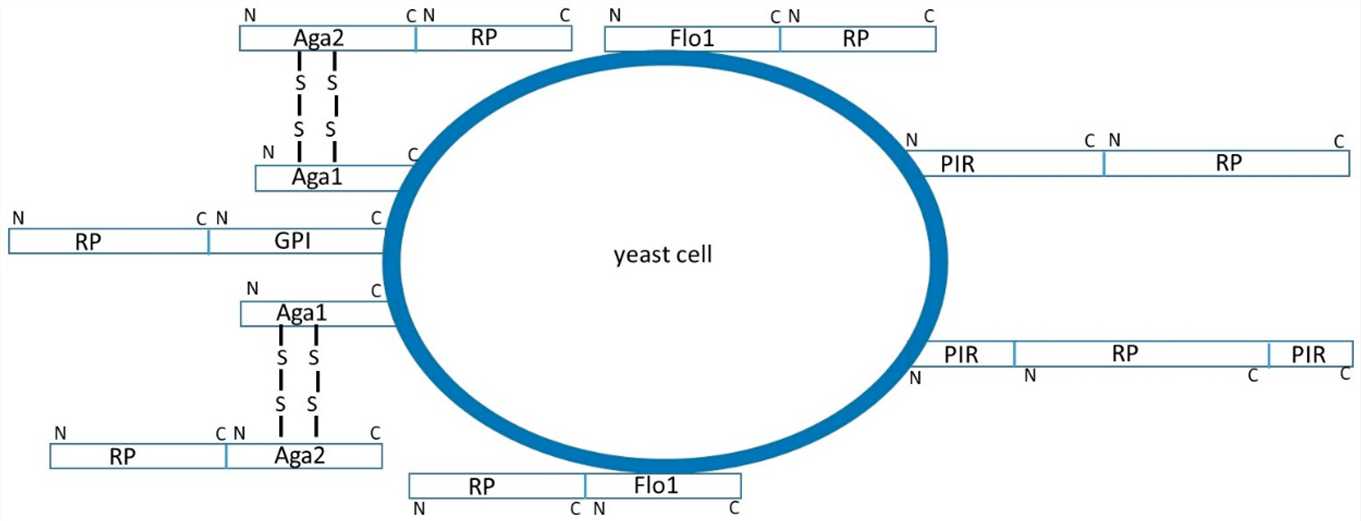The yeast cell surface display system has a well-established protein post-translational modification and secretion mechanism. Lifeasible introduces exogenous target protein gene sequences (exogenous proteins) into yeast cells after fusion with specific vector gene sequences. The expressed target protein is then localized to the yeast cell surface using the yeast intracellular protein translocation mechanism (GPI anchoring).
 Figure 1. Cell surface anchoring systems in yeast. (Lozančić, M. et al., 2019)
Figure 1. Cell surface anchoring systems in yeast. (Lozančić, M. et al., 2019)
We provide yeast display systems, including agglutinin and flocculation display expression system, depending on the site of fusion of the exogenous target protein with the yeast cell wall.
| Agglutinin display expression system | After ligation to the C-terminus of yeast encoding α-lectin, the foreign gene was inserted into the plasmid vector downstream of the signal peptide. After the induced expression of the fusion protein, the signal peptide directs the secretion of the chimeric protein to the outside of the cell. Due to the presence of the agglutinin peptide sequence containing the GPI anchoring signal at the C-terminus of the fusion protein, the protein can be anchored in the yeast cell wall, thereby displaying the protein molecule for expression on the yeast cell surface. |
| Flocculation display expression system | We use flocculation genes to fuse with exogenous proteins and express the fusion protein on the cell surface. |
Compared to phage and E. coli cell surface display technologies, we offer yeast display expression systems with the advantages of glycosylation, post-translational folding of proteins, and a secretion mechanism similar to that of mammals. One yeast cell is capable of displaying the expression of roughly 104 lectin proteins, allowing us to express complex proteins with biological activity efficiently.
Lifeasible uses yeast display technology to immobilize and display heterologous eukaryotic proteins on the surface of yeast cells. We meet your research needs in protein library screening, directed protein evolution, high-affinity antibody sorting, antigen/antibody library construction, antibody affinity maturation, vaccine production, immuno-biotechnology, and biosensors. Please contact our staff for your customized solution.
Reference
Lifeasible has established a one-stop service platform for plants. In addition to obtaining customized solutions for plant genetic engineering, customers can also conduct follow-up analysis and research on plants through our analysis platform. The analytical services we provide include but are not limited to the following:
STU-CRISPR System Improves Plant Genome Editing Efficiency
April 19, 2024
Application of Exosomes in Facial Beauty
April 12, 2024